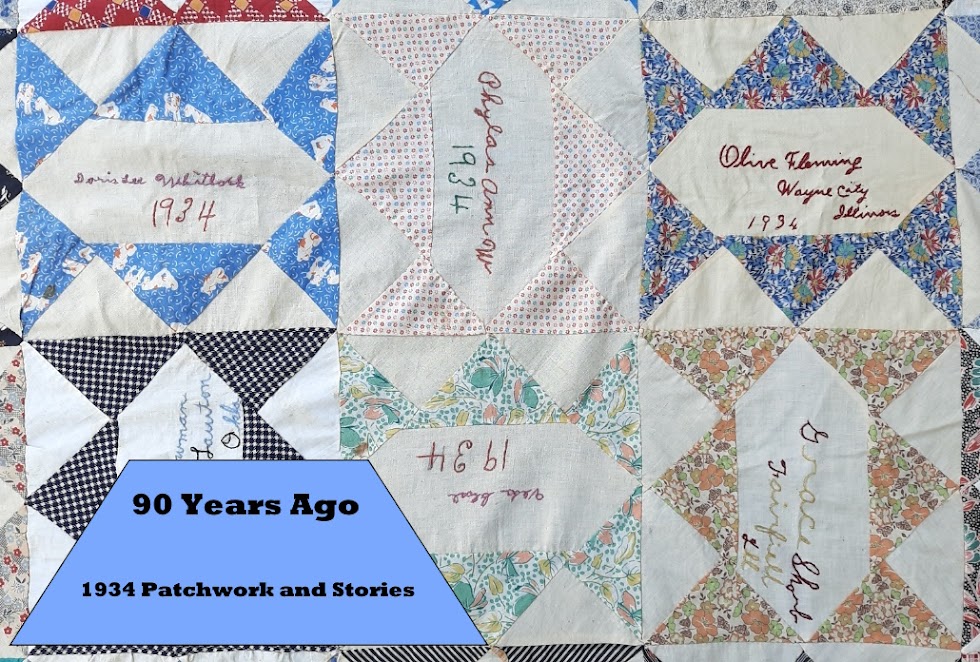"A Spider Quilt Made from Odd Materials"
 |
| Spider Web |
This week's block is Spider Web. Once the pieces are cut out it is very easy to piece. There are two Spider Web patterns in BlockBase, #292 and #2726. I used 292 to make this block, the eight triangles are the same size. In the other pattern the print triangles are wider than the plain ones. Other names for the block are Amazing Windmill, Autumn Leaves, Boston Pavement, Denver, Merry Go Round and Mystic Maze.
I found a nice 1950s scrappy Spider Web at Ann Quilts.
This is a good pattern for using odd materials, although any quilt is more sophisticated made in a definite and limited color scheme. Spider web pieces easily, too. First sew the quadrangles of contrasting color to the bases of all isosceles triangles. These augmented triangles then join and the corner triangles complete it into a square about 11 by 11 inches. Make cutting patterns of cardboard from the ones here given. Draw around with a pencil onto your material; cut a seam larger and sew back to the pencil line. A splendid way to file these old-fashioned quit patterns is to put each series of cardboards into an envelope marked with the name and a sketch of the block.
I love the straight-forward directions written by Ruby McKim. "Sew the quadrangles to the bases of all isosceles triangles." It was assumed that every quilter knew her geometry.












